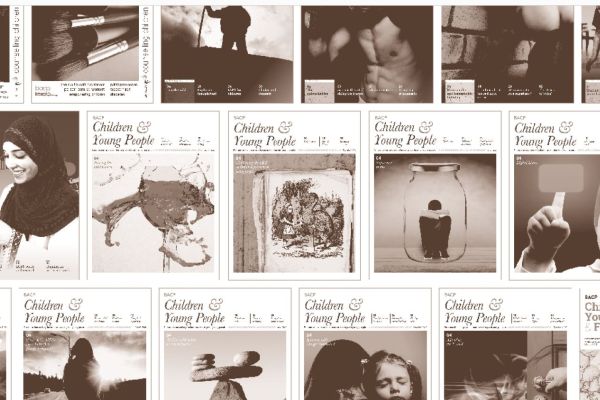Charley, age 13, frequently falls out and ‘falls back in’ with Deana. Often, the reasons for the conflict are unclear – it’s confusing. When they fall out ‘in real life’ (IRL), it’s usual for Deana also to ‘unfriend’ Charley on the social media sites they both use (Snapchat, Instagram, Facebook). In other words, Deana clicks an online button to signal, very visibly, that she and Charley are no longer friends; in one swift digital action, she deletes Charley as an online contact.
Typically, Charley then sends a new online friend request to Deana – a first step in reconciliation, a kind of digital olive branch. Deana accepts the friend request, and gradually, both on- and offline, they repair the rupture to their friendship. But this time, Charley has had enough. ‘Deana unfriends me all the time. I don’t know why she does that. This time, I’m not friending her first. She can add me if she wants, but I’m not chasing around after her.’
Charley and Deana’s story highlights some of the ways in which technologies that allow us to stay connected on the move are fundamentally changing how we ‘do’ relationships. In this article, I want to consider some of the implications of these changes for children and young people’s social and emotional development. What does it mean to be constantly connected to others, having experiences of digitally mediated relationships that are ‘always on, and always on you’1 – and how can we as therapists help children and young people to make sense of them?
Ubiquitous relating – relationships on tap
Technologist Mark Weiser coined the term ‘ubiquitous computing’ in the late 1980s to describe interactions with computers that could happen anytime and everywhere.2 At that moment in history, the idea that a large proportion of the world’s population would eventually have powerful computational devices in our pockets, bags and on our wrists was still pretty radical. But just 30 years later, carrying mobile, internet-enabled devices is the norm for most of the children and young people I meet through my clinical work in schools. Smartphones and tablets, coupled with social media apps like Snapchat, Instagram and Facebook, mean that children and young people are able to engage not only in ‘ubiquitous computing’ but also what I call ‘ubiquitous relating’ – relational ‘work’ that happens everywhere and all the time, even when the people involved are separated in space and time.
In one sense, this idea of relationships being ubiquitous isn’t new. For around a century, psychological theories of various flavours have recognised that we carry our relationships around with us internally, whether in our internal objects or internal working models (psychodynamic/object relations theories), through our self-image (humanistic psychology) and locus of control (personality psychology), or via our core beliefs and rules for living (cognitive behavioural therapy).
But the rise of the internet and mobile digital devices mean that it’s not just our internal representations of relationships that come with us everywhere. In the 21st century, we now have real-time and constant access to our outside-of-ourselves, ‘IRL’ connections. Our gadgets keep us relationally available 24 hours a day, seven days a week, not only to the people who mean the most to us, but also to peers, colleagues, and more distant acquaintances – even to total strangers.
Young people tell me that this can be exhausting, and that it can feel impossible to ignore the ‘ping’ of incoming social media notifications, which inevitably leave them wondering Who wants me, and what for?. Surveys consistently find that young people report missing out on sleep because of these ‘virtual impingements’,3 with 20 per cent of young people saying that they wake during the night to check messages on social media.4 I’ve found that being able to discuss with young people that this is a very recent change in human experience – that our minds and bodies evolved to fit a different ecological niche, where relationships were not perpetually switched ‘on’ – can help them to understand why adults get so concerned about young people taking breaks from social media, and particularly about switching off their phones and tablets well before bedtime, or keeping them somewhere other than in their bedrooms overnight.
The internet and the inner working of relationships
The internet allows us, on a large scale, to see the workings of our own and other people’s relationships in action. On social media platforms like Facebook and Snapchat, we see the minutiae of friendships, family relationships, intimate partnerships, business negotiations and political debates played out in a highly visible way, captured indelibly and indefinitely on public record. Given time, we may forget a Facebook fallout or a spat on Twitter, but the internet won’t.
The language of digitally mediated relationships may tell us something about their depth and quality. On social media, we ‘follow’ people in a way that would look very odd if we did it in the offline world [do watch this – Ed],5 and we can ‘pop up to someone’ at will, appearing in their digital view whenever we feel like communicating, rather than at a time that’s mutually convenient. Social media apps allow, encourage and even remind us to perform key relational tasks, like wishing someone happy birthday, acknowledging an anniversary, or giving social strokes. ‘Liking’ our friends’ photos, comments and status updates has become an easy and quick tool for expressing and articulating our friendships, in a space where we may have hundreds of relationships competing for our attention. As researcher Taina Bucher puts it: ‘With the “like” button, Facebook made paying attention to friends a one-click sentiment.’6
Charley and Deana’s story also highlights that the nature of making and breaking friendship itself has changed in the 21st century. Digital actions like ‘(un)friending’ suggest that the doing and undoing of friendship has started to become something similar to what linguists would call a speech act – an action that is performed by making a public declaration (like getting married with ‘I do’, or making a commitment with ‘I promise’). In the digital age, we can ‘add’ or ‘delete’ friends at the click of a button, rather than negotiating their complexities through face-to-face interaction. According to Oxford University Press, ‘unfriend’ was word of the year in 2009, and ‘unfriending’ is now so common that there are apps that allow users to track who has deleted them from social media sites. Research suggests that around three-quarters of teen Facebook users have deleted people from their friend list, and more than half have blocked friends (that is, used digital sanctions to stop friends from contacting them) from their social networking sites.7
All of these changes in the ‘doing’ of friendships, which have appeared rapidly in just over a decade, can be useful to articulate in our work with children and young people, especially when the going gets tough for them in their relationships.
Relating as a pastime?
Much of young people’s relating is now done in digitally mediated ways, although, in my experience, young people tend to report that a large proportion of their online connections are people they also know IRL (that is, they do not have many friends that they relate with exclusively in online spaces). Friendships and other peer relationships move fluidly between offline and online spaces, and staying in digital contact with friends and peers takes up a large proportion of many young people’s free time.
When I ask children and young people what they do for fun or to relax, often their first answer is that they ‘go on [their] phone’. This phrase means different things to different people: ‘going on your phone’ includes a whole raft of activities, such as playing games, watching videos on YouTube, or films and shows on Netflix, browsing websites, reading digital books, and using creative apps to pursue or develop hobbies online. But for many young people, it seems to stand for digitally mediated relating – explicitly turning their attention towards managing or tending their relationships through their devices, and seeking out digital connections. With the rise of ‘going on your phone’ as a pastime, relating with others seems to have become elevated (or reduced, depending on your perspective) to the status of a hobby.
But perhaps this isn’t such a new phenomenon for children and young people. Teenagers, in particular, need to learn to be in the company of their peers, and to practise how to be with others of the same age in an intimate way. This is an important part of the work of adolescence, and it is evolutionarily adaptive: without a shift from a focus on family to a focus on peers, young people would never leave their families of origin to go out into the world and explore – or have children of their own. For those of us who didn’t grow up constantly connected, it can be easy to dismiss going on your phone as aimless time-wasting. Anyone who has been sucked into mindlessly scrolling through their newsfeed on Twitter or Facebook will recognise how easily this kind of passive, digital grazing can swallow time. But as therapists, I think we also need to recognise how important it is for children and young people to have these opportunities to learn to navigate the social world via their digital connections, and perhaps to help them spot when they are favouring or avoiding one social arena over others.
Sherry Turkle1 notes how often children and young people in her interview studies spoke about preferring digitally mediated interactions to face-to-face conversations – often because interactions through their devices felt more controllable then the messy, sometimes stressy business of IRL relating. Bringing these contrasts into young people’s awareness (without becoming ‘preachy’ about the relative value of IRL versus digital interactions) can help our young clients to recognise areas of fluidity and balance for them, as well as areas of stuckness or avoidance.
Sarah Haywood works as a school-based clinician and trainer for Place2Be. She is also a lecturer in Art Psychotherapy at Queen Margaret University, Edinburgh.
In this series...

Streaking, streaming, liking and poking: learning the lingo of the digital world
In a new short series that keeps us up to speed with our clients’ digital world, Sarah Haywood ranges round ‘digital childhood’ and offers some food for thought. BACP Children, Young People and Families, September 2018

The digital umbilicus: Attachment and anxiety in the age of information
Part three of Sarah Haywood’s short series, keeping us up to speed with our clients’ digital world, in which she discusses FOMO, phubbing, and the curse of asynchronous communication. BACP Children, Young People and Families, March 2019

Weapons of mass distraction: addictive design, wellbeing and human rights
Open article: The final instalment of Sarah Haywood’s four-part series, focusing on children and young people’s digital worlds. BACP Children, Young People and Families, June 2019
References
1 Turkle S. Alone together: why we expect more from technology and less from each other (3rd edition). New York: Basic Books; 2017.
2 Weiser M. The computer for the twenty-first century. Scientific American 1991; 94–104.
3 Balick A. TMI in the transference LOL: psychoanalytic reflections on Google, social networking, and ‘virtual impingement’. Psychoanalysis, Culture and Society 2012; 17(2): 120–136.
4 #StatusofMind: social media and young people’s mental health and wellbeing. Young Health Movement and Royal Society for Public Health. [Online.] www.rsph.org.uk/uploads/assets/ uploaded/62be270a-a55f-4719ad668c2ec7a74c2a.pdf (accessed 9 October 2018).
5 Can I be your friend? English National Opera 2011. [Online.] www.youtube. com/watch?v=aDycZH0CA4I (accessed 9 October 2018).
6 Bucher T. The friendship assemblage: investigating programmed sociality on Facebook. Television and New Media 2012; 14(6): 479–493.
7 Gashi L, Knautz K. Unfriending and becoming unfriended on Facebook. In: Knautz K, Baran KS (eds). Facets of Facebook: use and users. Berlin: De Gruyter; 2016 (pp1–44).
